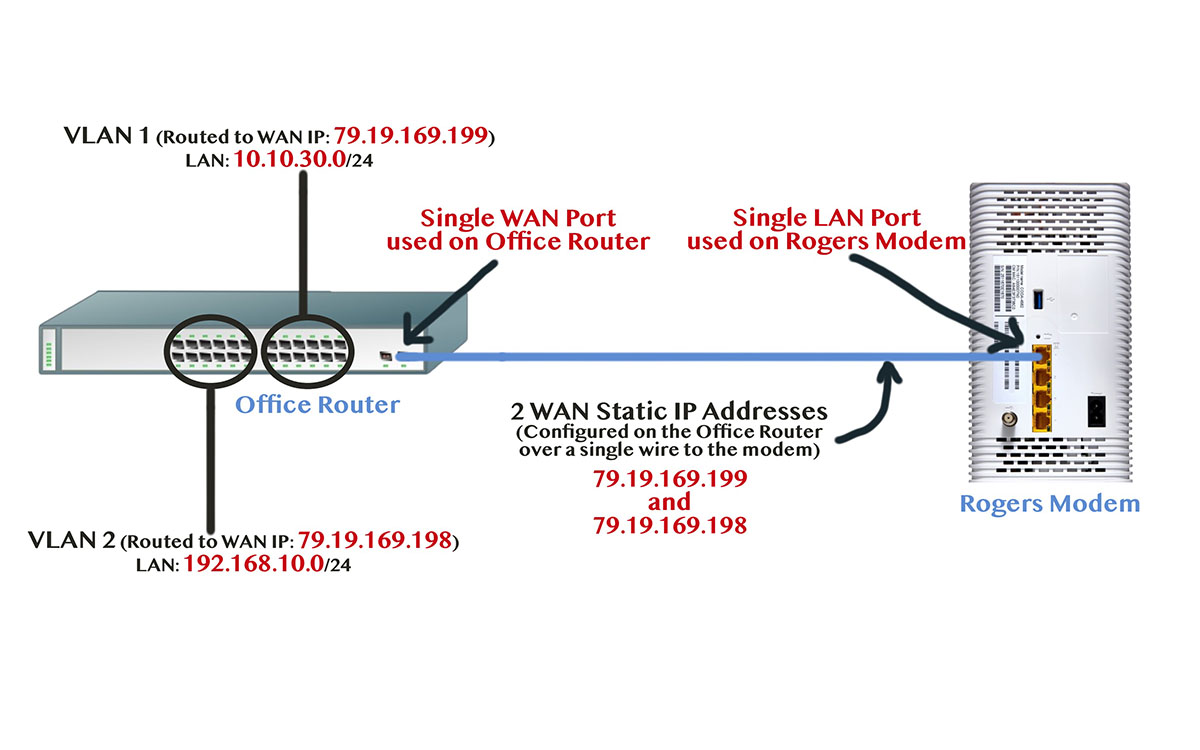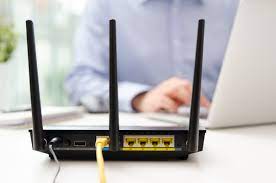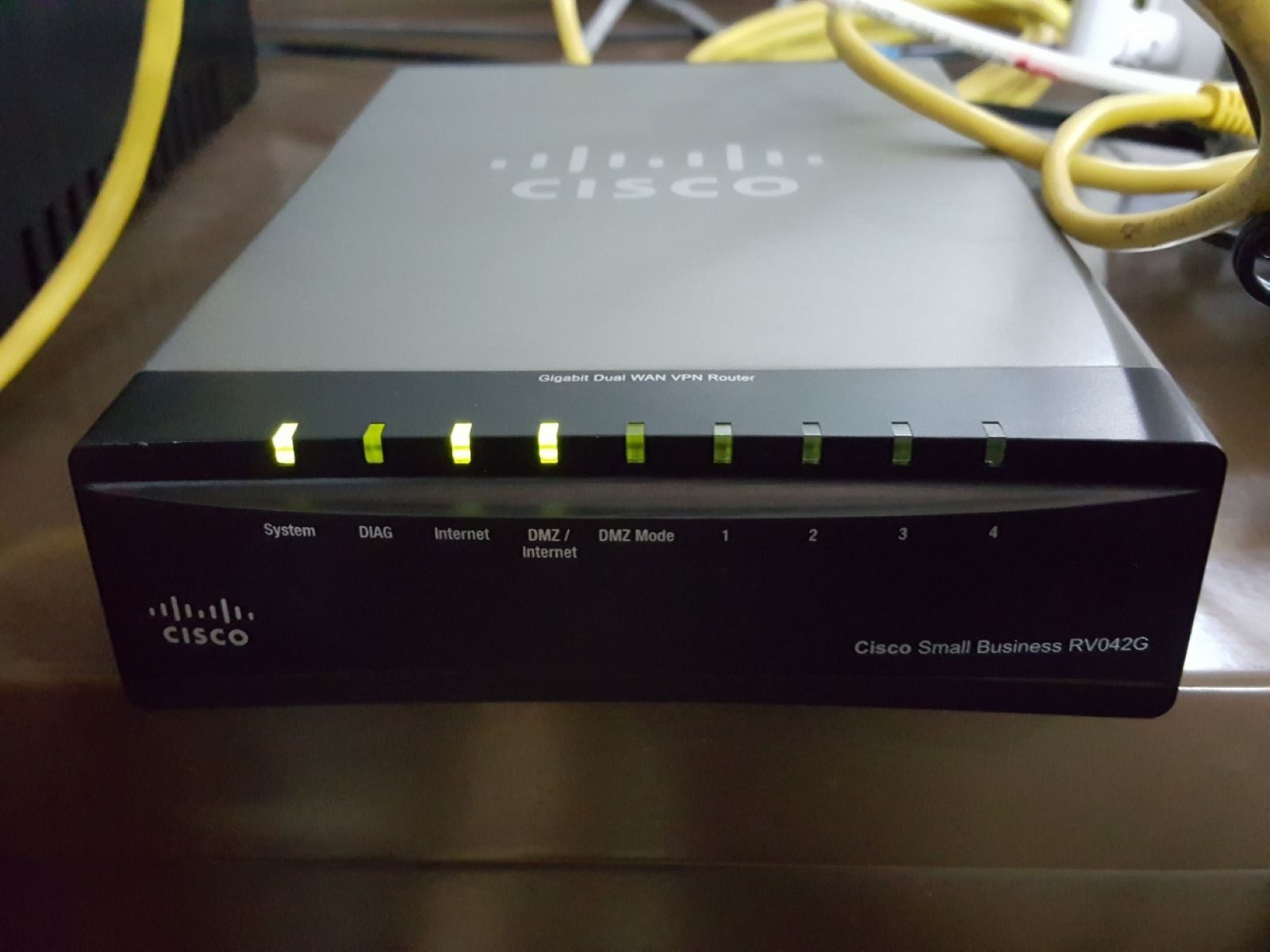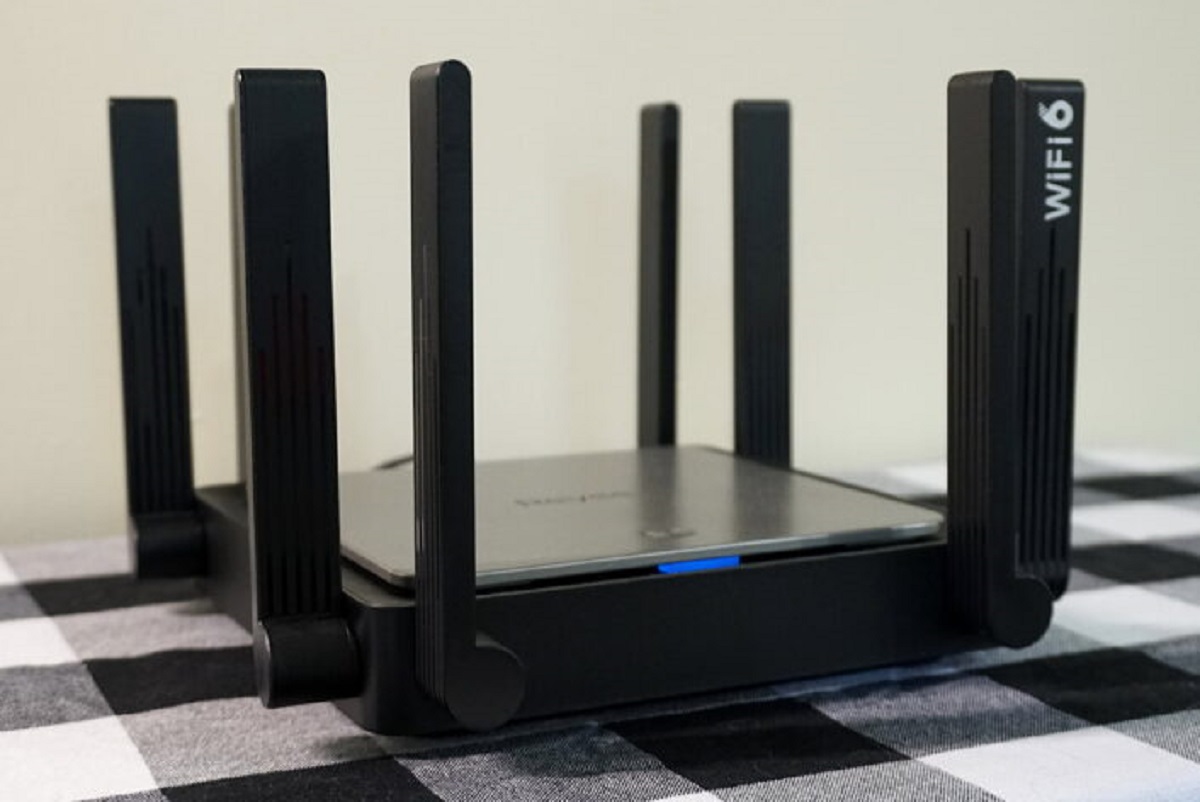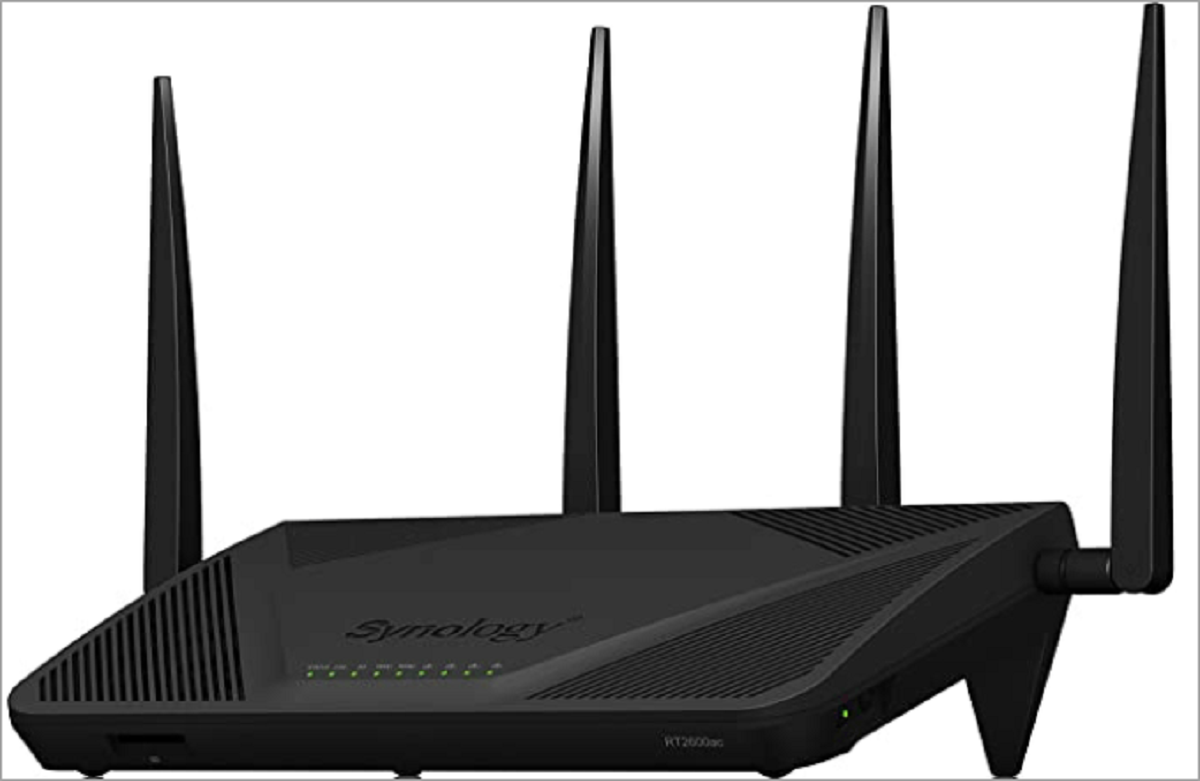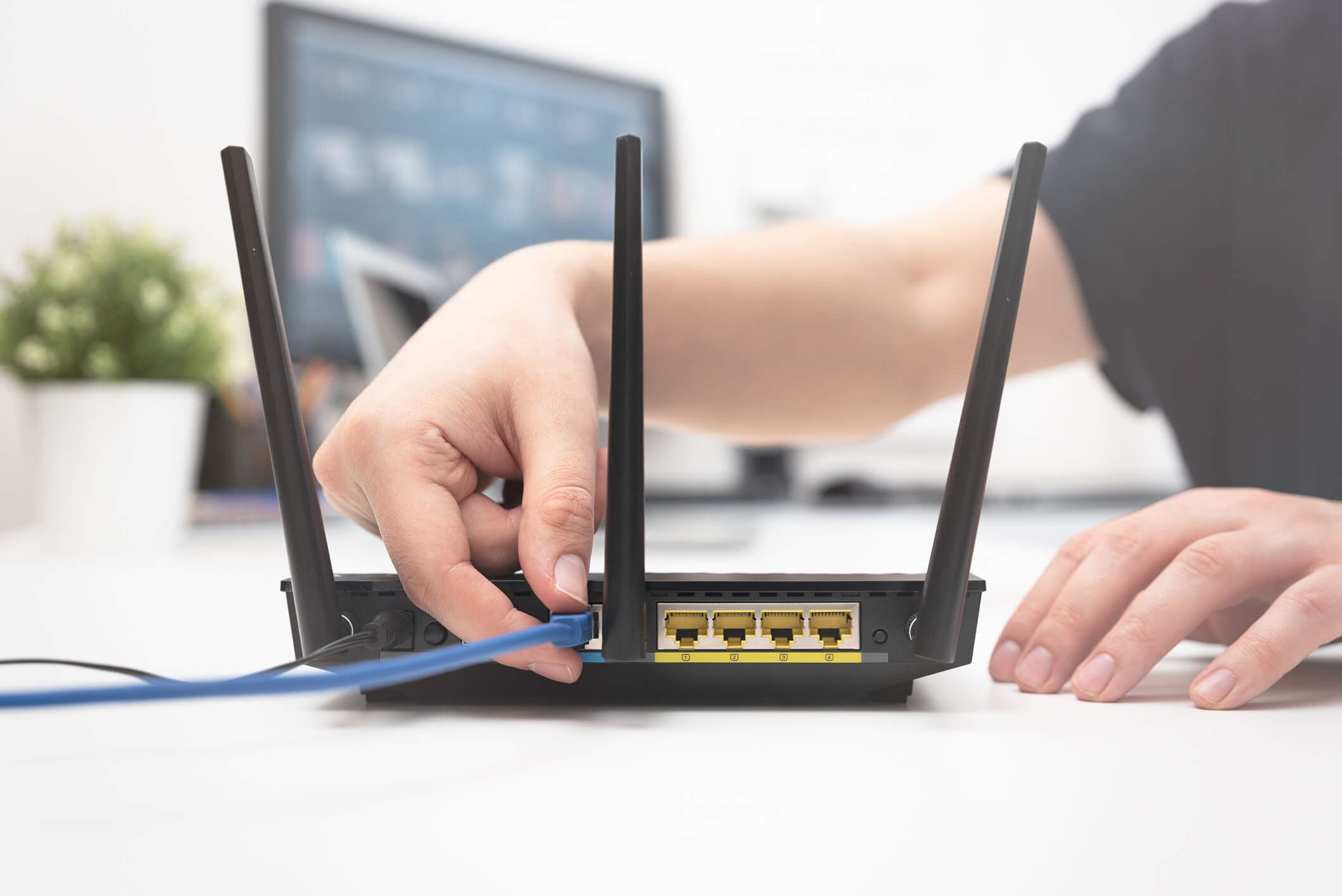Introduction
Welcome to the world of networking where connections and communication are made possible. Whether you’re browsing the internet, accessing cloud-based applications, or streaming your favorite shows, one term that you might have come across is WAN IP. But what exactly is a WAN IP and why is it essential? In this article, we will delve into the details of WAN IP, its functioning, and how it differs from a LAN IP.
WAN IP, or Wide Area Network IP, is a unique identifier assigned to devices connected to a wide area network. It acts as the public-facing address that allows devices to communicate with other devices over the internet. Unlike a LAN IP, which is used within a local network, a WAN IP is used to identify devices in a broader network, such as across different geographic locations or across multiple networks.
Understanding how a WAN IP works is crucial to comprehend its significance. When a device connects to the internet through an internet service provider (ISP), it is assigned a WAN IP address. This address is how other devices on the internet can locate and communicate with the device. Think of it as a digital apartment or office number that helps deliver data packets to the correct destination.
Now, let’s distinguish between a WAN IP and a LAN IP. While a WAN IP is a public-facing address used for internet communication, a LAN IP, or Local Area Network IP, is a private address assigned to devices within a local network. A LAN IP allows devices connected to the same network, such as a home or office network, to communicate with each other. This distinction is crucial as it enables data to be routed efficiently within local networks, while WAN IP addresses facilitate communication across different networks.
So why is WAN IP important? Well, it plays a vital role in enabling communication and data exchange across vast networks. Without WAN IP addresses, devices would not be able to connect and interact with each other over the internet. Whether you’re accessing a website, sending emails, or engaging in video conferencing, the functionality of WAN IP addresses is fundamental in ensuring seamless connectivity.
Now that we’ve covered the basics of what a WAN IP is and why it is important, let’s move on to finding your WAN IP address and troubleshooting common issues that may arise. Understanding these aspects will further enhance your knowledge of how WAN IP functions and how to address any challenges that may arise along the way.
Definition of WAN IP
Before diving deeper into the intricacies of WAN IP, it’s essential to have a clear definition of what it actually is. WAN IP, or Wide Area Network IP, is a unique numerical identifier assigned to devices connected to a wide area network. It serves as the public-facing address that allows devices to communicate with each other over the internet.
Every device connected to the internet through an internet service provider (ISP) is assigned a WAN IP address. This address acts as a key element in establishing communication between devices. It functions similarly to a phone number or a postal address used to identify and locate a specific device on the internet.
WAN IP addresses are crucial for enabling data exchange between devices across vast networks. They play a significant role in facilitating various online activities, such as web browsing, email communication, video streaming, and online gaming.
WAN IP addresses are usually assigned dynamically by the ISP. This means that each time a device connects to the internet, it may receive a different WAN IP address. However, some ISPs also offer the option to have a static WAN IP address, which remains unchanged over an extended period of time.
The format of a WAN IP address follows the Internet Protocol version 4 (IPv4) or Internet Protocol version 6 (IPv6) standards. IPv4 addresses consist of four sets of numbers separated by periods, while IPv6 addresses are longer and use hexadecimal characters along with colons to separate the sections.
It’s important to note that WAN IP addresses are distinct from Local Area Network (LAN) IP addresses. While WAN IP addresses are used for external communication over the internet, LAN IP addresses are used for internal communication within a localized network, such as a home or office network.
Understanding the definition of WAN IP is foundational to comprehending its role in establishing communication between devices over the internet. Now that we have a clear understanding of what a WAN IP address is, let’s explore how it functions and the differences between WAN IP and LAN IP in more detail.
How WAN IP Works
In order to understand how WAN IP works, let’s take a closer look at the process of data transmission across the internet. When a device is connected to the internet through an ISP, it is assigned a WAN IP address. This address acts as a unique identifier for the device.
When you send a request, such as accessing a website or sending an email, the data packets containing the request are generated on your device. These packets are then tagged with your WAN IP address as the source address and the destination IP address of the receiving device.
Once the data packets are ready, they are sent from your device to your local network’s router, which acts as the gateway to the internet. The router examines the destination IP address and determines whether the destination device is within the local network or outside of it.
If the destination device is within the local network, the router forwards the data packets to the appropriate device using the LAN IP address. However, if the destination device is outside of the local network, the router takes a different route.
The router checks the destination IP address and determines that it belongs to a different network. It then wraps the data packets in a new packet with its own WAN IP address as the source address and the destination IP address of the receiving device. This process is known as Network Address Translation (NAT).
Once the data packets are wrapped with the router’s WAN IP address, they are sent out to the internet. Along the way, they traverse various routers and networks until they reach the destination device’s network. The receiving device’s router then unwraps the data packets, reads the destination IP address, and forwards them to the appropriate device on the network.
This entire process allows for seamless communication and data exchange between devices across different networks. WAN IP addresses serve as the bridge that enables devices to locate, connect, and exchange information with each other over the internet.
It’s important to note that WAN IP addresses can change, especially with dynamic IP assignment by ISPs. This means that each time you connect to the internet, you may be assigned a new WAN IP address. However, there are methods to obtain a static WAN IP address if you require a fixed address for specific purposes, such as hosting a website or running a server.
Understanding how WAN IP works provides a solid foundation for comprehending the differences between WAN IP and LAN IP. Let’s explore these differences in the next section.
Differences between WAN IP and LAN IP
While both WAN IP (Wide Area Network IP) and LAN IP (Local Area Network IP) are used to identify devices, they serve different purposes within a network context. Let’s explore the key differences between WAN IP and LAN IP.
1. Scope: The most significant difference between WAN IP and LAN IP is the scope of their usage. WAN IP addresses are used for external communication over the internet, allowing devices to connect and exchange data with other devices across different networks. On the other hand, LAN IP addresses are used for internal communication within a localized network, such as a home or office network. They enable devices within the same network to communicate with each other without the need for external internet connection.
2. Subnet: WAN IP addresses are assigned by the internet service provider (ISP) and are usually unique across all connected devices on the internet. They typically belong to a different subnet and have a larger address range. LAN IP addresses, on the other hand, are assigned within a local network and belong to the same subnet. They have a smaller address range and might be duplicated across different local networks, as long as the networks remain isolated from each other.
3. Routing: WAN IP addresses are essential for routing data packets across different networks. They act as the source and destination addresses when data is transmitted over the internet. Routers use the WAN IP addresses to determine the correct path for the data packets to reach their intended destination. On the other hand, routers within a LAN use LAN IP addresses to route data packets between devices within the same network.
4. Network Configuration: WAN IP addresses are assigned dynamically or statically by the ISP. Dynamic addressing means that each time a device connects to the internet, it may receive a different WAN IP address. Static addressing, on the other hand, provides a fixed WAN IP address that remains unchanged over an extended period of time. LAN IP addresses are typically assigned by the network administrator within the local network using methods such as Dynamic Host Configuration Protocol (DHCP) or manual configuration.
5. Accessibility: WAN IP addresses are globally unique and accessible from anywhere in the world. They allow devices to establish connections and communicate across geographical boundaries. LAN IP addresses, on the other hand, are only accessible within the local network. Devices outside of the network cannot directly communicate with devices using their LAN IP addresses unless specific network configurations, such as port forwarding, are in place.
Understanding the differences between WAN IP and LAN IP is crucial for configuring and managing networks effectively. Both types of IP addresses are integral to establishing communication and enabling data exchange within and between networks.
Why WAN IP is Important
WAN IP (Wide Area Network IP) plays a crucial role in enabling seamless communication and data exchange across networks. Here are key reasons why WAN IP is important:
1. Internet Connectivity: WAN IP addresses are necessary for devices to connect to the internet. Without a WAN IP address, devices would not be able to access online resources, browse websites, or use cloud-based applications. It serves as the unique identifier that allows devices to establish connections and exchange data over the internet.
2. Global Communication: WAN IP addresses enable devices to communicate on a global scale. They allow devices in one country or network to connect and interact with devices in another. This facilitates international collaborations, remote work, and cross-border communication, essential in today’s interconnected world.
3. Data Routing: WAN IP addresses are instrumental in routing data packets across networks. They act as the source and destination addresses that routers use to transmit data to the correct location. WAN IP addresses ensure that data packets reach their intended recipients efficiently, even when devices are located thousands of miles apart.
4. External Access: WAN IP addresses enable remote access to devices and services within a network. For example, if you have a security camera system or a home automation system, WAN IP addresses allow you to remotely monitor and control these devices from anywhere in the world. It also enables remote desktop connections and access to private networks securely.
5. Hosting Services: WAN IP addresses are vital for hosting websites, servers, and other online services. When you host a website or run a server, your WAN IP address acts as the gateway for users to access your services. It directs incoming requests to the correct device within your network, enabling others to view your website or use your hosted services.
6. Internet Protocol Version 6 (IPv6) Transition: With the depletion of Internet Protocol Version 4 (IPv4) addresses, the adoption of IPv6 has become essential. IPv6 allows for a vast number of unique addresses, resolving the scarcity issue. WAN IP addresses play a crucial role in transitioning to IPv6, ensuring the continued growth and expansion of the internet.
Overall, WAN IP addresses are indispensable in today’s interconnected world. They enable global communication, provide internet connectivity, facilitate data routing, allow for remote access, support hosting services, and contribute to the smooth transition to IPv6. Understanding the importance of WAN IP addresses is crucial for network administrators and individuals alike in effectively utilizing and managing their network connections.
How to Find Your WAN IP Address
Discovering your WAN IP address is essential for various network-related tasks, such as troubleshooting connectivity issues, configuring remote access, or hosting services. Fortunately, there are several methods you can use to find your WAN IP address:
1. Use an Online IP Lookup Tool: One of the easiest ways to find your WAN IP address is by using online IP lookup tools. These websites display your WAN IP address as soon as you access their webpages. Simply open your preferred web browser and search for “What is my IP address?” The search results will provide numerous websites that can show your WAN IP address with a single click.
2. Access Your Router’s Web Interface: Another method is accessing your router’s web interface. Open your web browser and enter your router’s IP address. Typically, the default IP address for most routers is 192.168.1.1 or 192.168.0.1. Once you have logged in to your router’s settings, navigate to the status or network section, where you will find your WAN IP address listed.
3. Check the WAN IP Address on Network Devices: Some network devices, such as modems or network gateways, have indicators or LCD screens that display the WAN IP address. Check the device itself or refer to its user manual for instructions on viewing the WAN IP address.
4. Check Your Public IP Address through Command Prompt (Windows): If you’re comfortable with using the command line interface, follow these steps to find your WAN IP address on a Windows computer:
- Press the Windows key + R to open the Run dialog box.
- Type “cmd” and press Enter to open the Command Prompt.
- In the Command Prompt window, type “ipconfig” and press Enter.
- Look for the “IPv4 Address” or “Default Gateway” under your network connection. The address listed there is usually your LAN IP address. However, in some cases, it may also display your WAN IP address.
- Alternatively, you can type “curl ifconfig.me” or “curl checkip.dyndns.org” and press Enter. The Command Prompt will display your WAN IP address using these online services.
5. Use Network Utilities: Network utilities, such as “ipconfig” on Windows or “ifconfig” on Linux, can display network information, including your WAN IP address. Open the command line interface or terminal and enter the appropriate command for your operating system to view your WAN IP address.
By using these methods, you can quickly find your WAN IP address and utilize it for various network-related tasks. Keep in mind that WAN IP addresses may change, especially with dynamic IP assignment by your internet service provider (ISP). If you require a static WAN IP address, contact your ISP and inquire about obtaining a fixed IP address for your connection.
Common Problems with WAN IP
While WAN IP (Wide Area Network IP) addresses are essential for internet connectivity and communication, they can sometimes pose certain challenges. Here are some common problems that you may encounter related to WAN IP:
1. Dynamic IP Address Changes: If your internet service provider (ISP) assigns dynamic IP addresses, your WAN IP address may change periodically. This can become an issue if you are hosting services or need consistent remote access to your network. To overcome this problem, you can opt for a static IP address from your ISP, which remains unchanged.
2. Port Forwarding: When hosting services or running applications that require external access, such as a web server or video conferencing software, you may need to configure port forwarding. Port forwarding allows incoming traffic to be directed to specific devices within your network. However, configuring port forwarding can sometimes be challenging if you are unfamiliar with your router’s settings and protocols.
3. Firewall Settings: Firewalls add an extra layer of security to your network by filtering and blocking certain types of traffic. However, they can inadvertently block incoming or outgoing connections, including communications through your WAN IP address. Adjusting your firewall settings or allowing exceptions for specific ports and protocols might be necessary to ensure proper connectivity.
4. Internet Service Provider Restrictions: Some ISPs impose restrictions that might affect your WAN IP address usage. For instance, they may block certain ports or limit the number of simultaneous connections. It’s recommended to review your ISP’s terms of service to understand any restrictions that could impact your network operations.
5. Network Address Translation (NAT) Limitations: NAT is a crucial process that allows multiple devices to share a single WAN IP address. However, the use of NAT can introduce limitations, such as difficulties in establishing peer-to-peer connections or limitations on certain applications that rely on direct access to IP addresses. In some cases, using techniques like Universal Plug and Play (UPnP) or configuring a DMZ (Demilitarized Zone) can help mitigate these limitations.
6. Unstable Internet Connection: Issues with your internet service, such as intermittent connectivity or slow speeds, can affect the reliability and performance of your WAN IP address. Addressing these issues might require contacting your ISP, troubleshooting your network equipment, or optimizing your network configuration.
When dealing with problems related to your WAN IP address, it is important to have a good understanding of network concepts, consult your ISP’s support resources, or seek assistance from experienced network professionals. By addressing these common problems, you can ensure smoother network operations and reliable connectivity.
Conclusion
Understanding the significance of WAN IP (Wide Area Network IP) addresses is crucial for navigating the interconnected digital landscape. These unique identifiers play a vital role in establishing communication, facilitating data exchange, and enabling global connectivity across networks.
In this article, we explored the definition of WAN IP and how it functions within a network environment. We learned about the differences between WAN IP and LAN IP, where WAN IP addresses are used for external communication over the internet, while LAN IP addresses are used for internal communication within localized networks.
We discovered why WAN IP addresses are important, from their role in providing internet connectivity and global communication to their significance for routing data and allowing external access to devices and services. Additionally, we discussed the importance of WAN IP addresses in the transition to IPv6 and the hosting of websites and servers.
Finding your WAN IP address was also addressed, with various methods outlined, including online IP lookup tools, accessing your router’s web interface, checking network devices, using command prompt or network utilities, and more.
Furthermore, we highlighted common problems related to WAN IP addresses, such as dynamic IP address changes, port forwarding complexities, firewall settings, ISP restrictions, NAT limitations, and unstable internet connections. Recognizing these challenges empowers network administrators and individuals to proactively tackle these issues and ensure smooth network operations.
In conclusion, WAN IP addresses serve as the gateway to the vast digital realm, allowing devices to connect, communicate, and exchange information across diverse networks. By understanding the fundamentals of WAN IP and addressing potential problems, we can harness the power of connectivity and effectively navigate the ever-evolving landscape of the internet.







